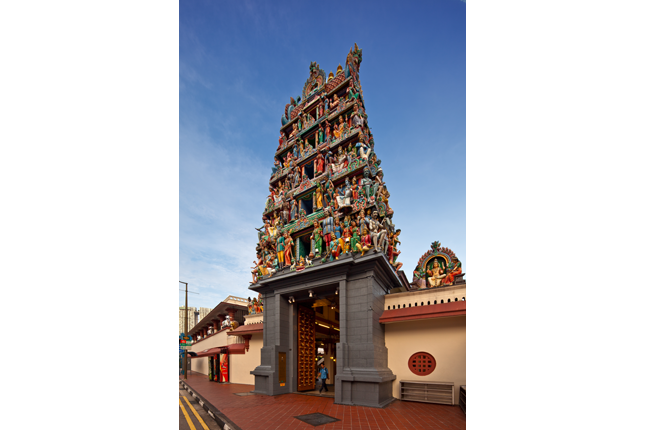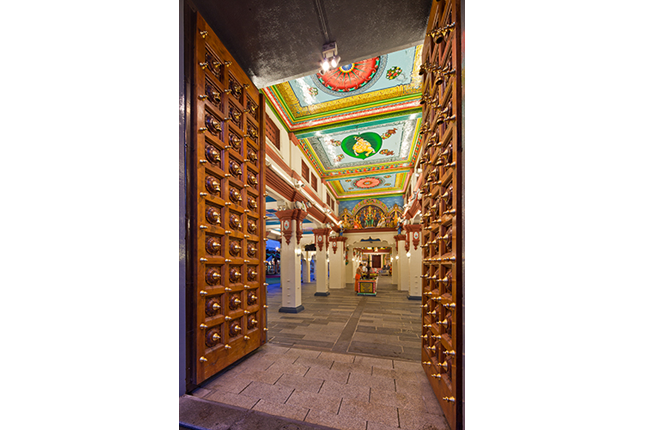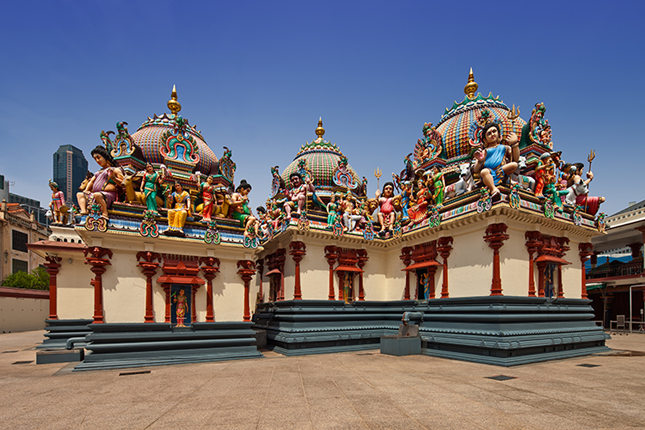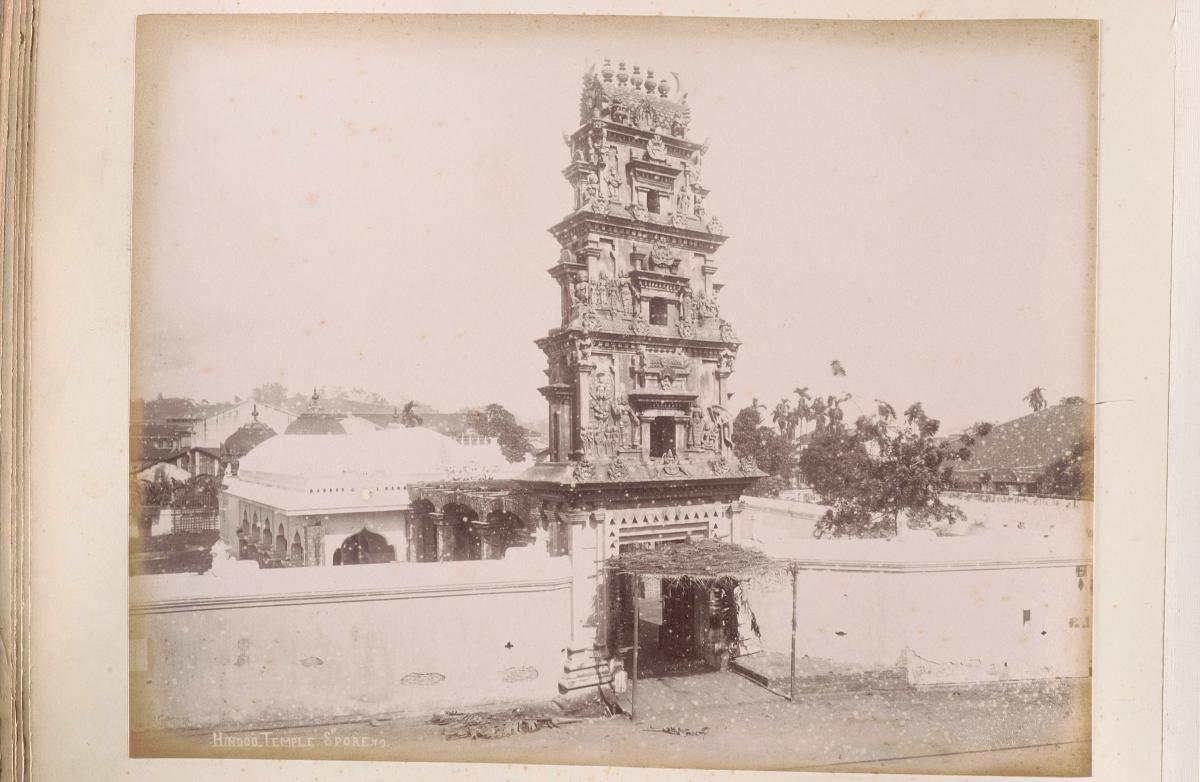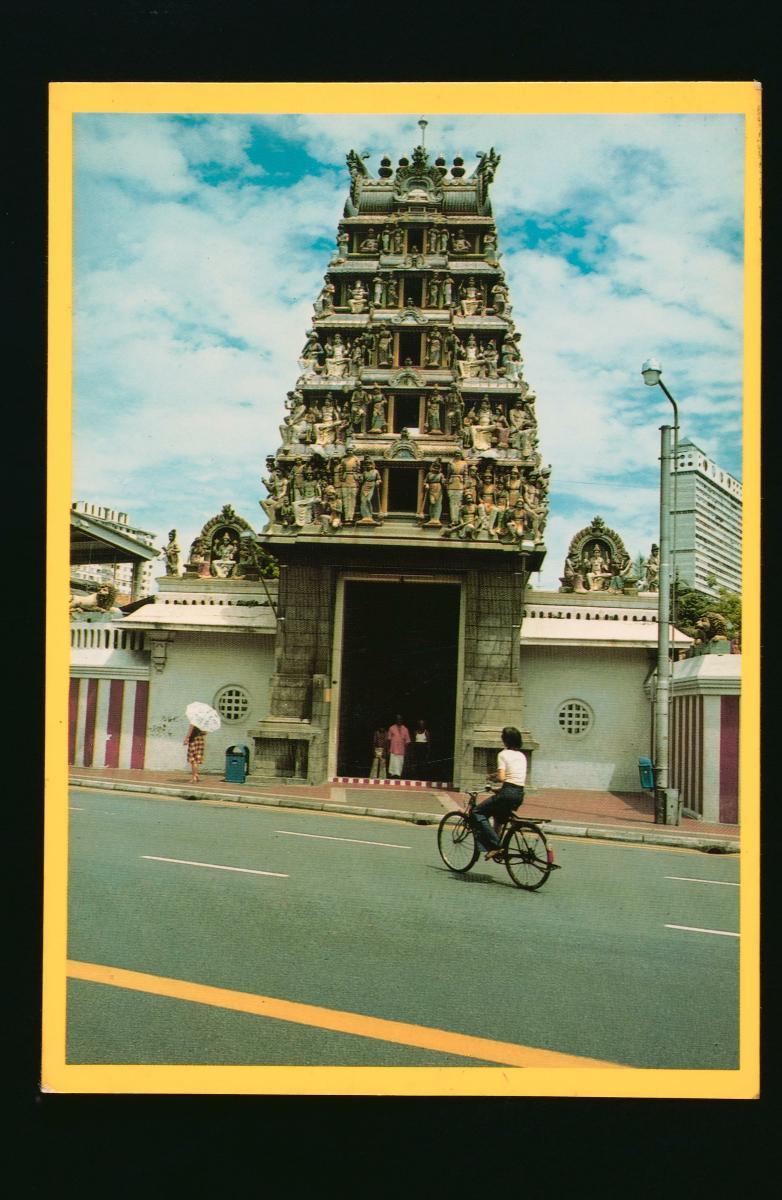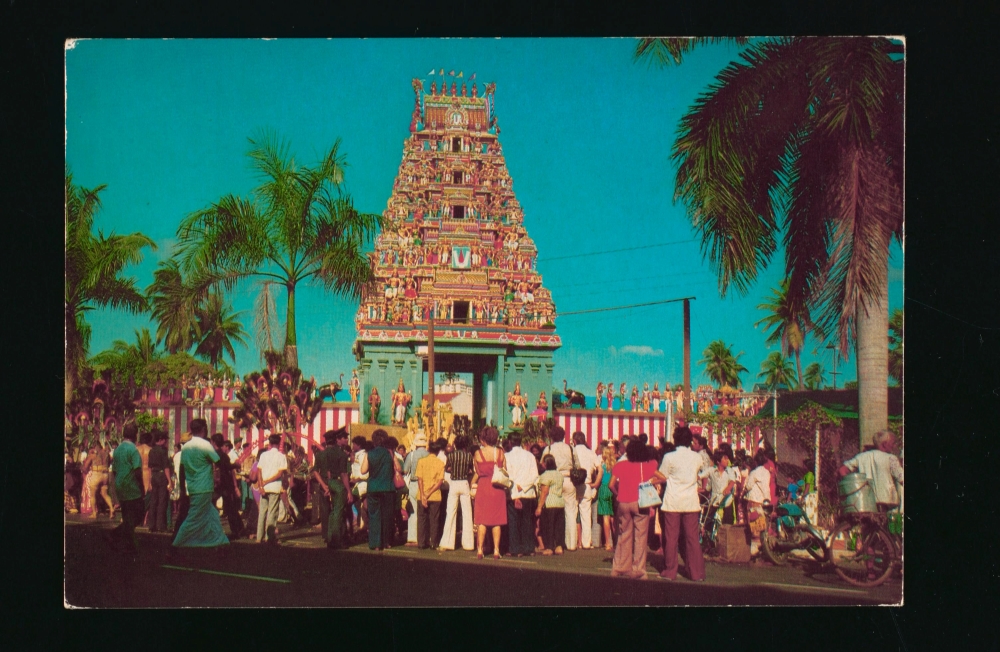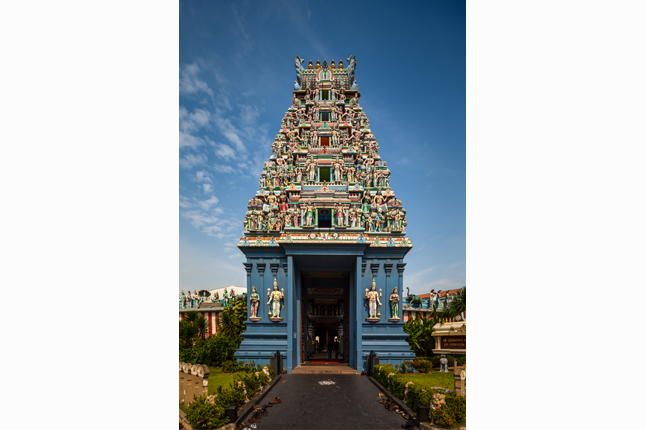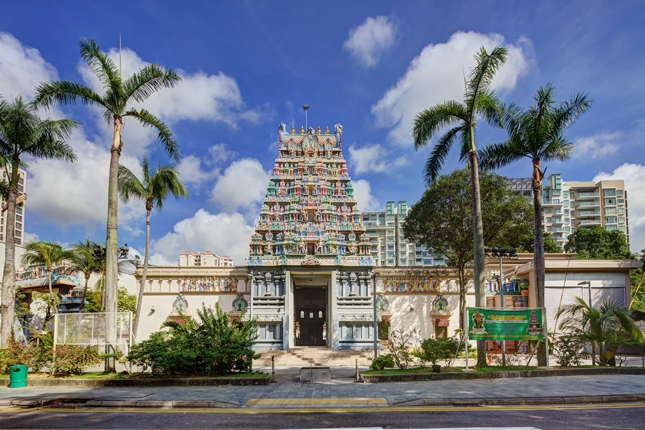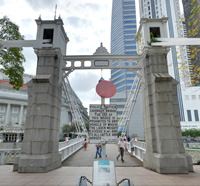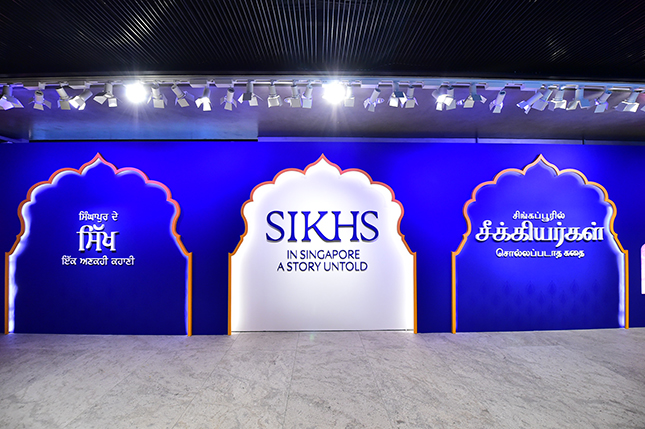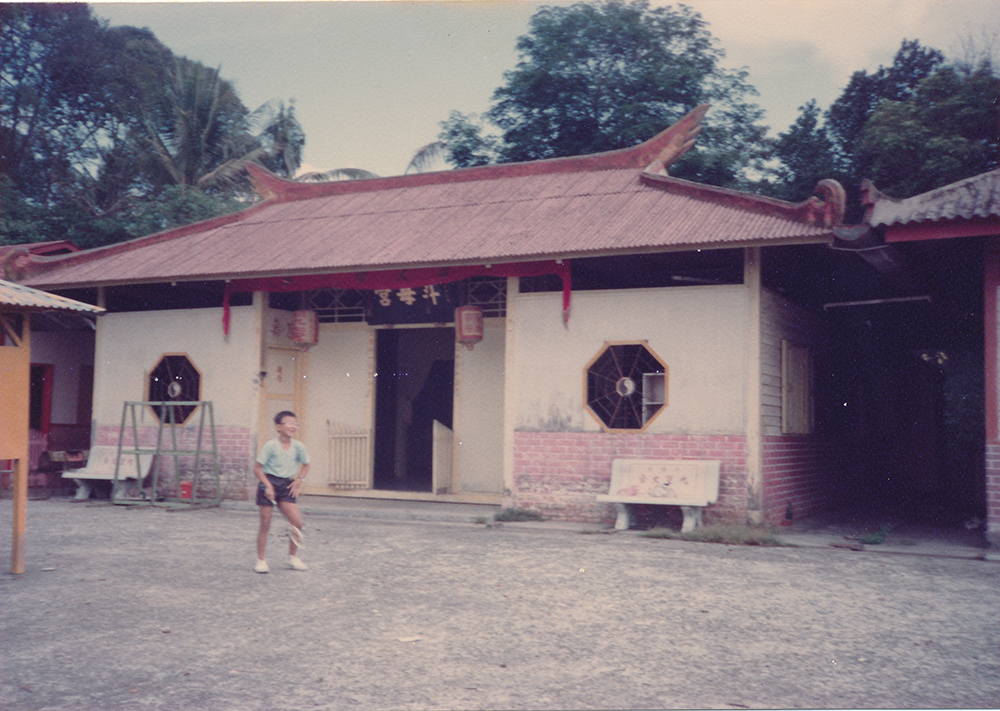Together with Jamae Mosque, Sri Mariamman Temple – Singapore’s oldest Hindu temple – is an enduring icon on South Bridge Road which is a part of Chinatown. Both monuments testify to the significant Tamil population that once lived in the vicinity, and are constant reminders of their contributions to Singapore’s development as a British colony. In particular, Sri Mariamman Temple represents not just the age-old beliefs and customs of the Hindus, but also stands as a memorial to the philanthropic deeds of early Tamil pioneers.
First Hindu Temple in Singapore
Sri Mariamman Temple was founded by Indian pioneer Naraina Pillai, a government clerk from Penang who was in the company of Sir Stamford Raffles on the latter’s second visit to Singapore in 1819. Initially, the British East India Company had allotted a plot on Telok Ayer Street for a Hindu temple. However, this was rejected by the Hindu community because there was no convenient supply of freshwater, required for rituals, in the vicinity. Colonel William Farquhar, Resident of Singapore, permitted Pillai to build the temple near Freshwater Stream (Stamford Canal today). However, the Town Planning Committee later found this site unsuitable as it had other plans for it.
In 1823, the present site on South Bridge Road was granted and set aside in Singapore’s first town plan which was drawn up by Lieutenant Philip Jackson. A wood-and-attap structure was erected on the site by 1827. The chief deity of the temple, Sri Mariamman, is associated with the sustaining and life-giving properties of rain (in Tamil, maari means rain, and amman, mother). She is also worshipped for her powers in curing epidemic diseases such as cholera. The temple was also known as ‘Kling Temple’ in the past, as Kling (sometimes spelt as Keling or Kelenga) was a common term that referred to southern Indians, particularly the Tamils.
The temple compound was enlarged when an Indian landowner, Seshasalam Pillai, gave some of his land to the temple. A granite slab in the temple commemorates this donation. The oldest sections of the present brick structure were constructed circa 1843. Highly skilled craftsmen from India and even China were employed for the building project. In 1915, the firm Swan & Maclaren was appointed to design a new sheltered walkway between the entrance tower and the main building, following the 1910 fire which destroyed the former attap-covered walkway.
More Than a Place of Worship
Sri Mariamman Temple was not only a religious house for the Hindu community. It was also a refuge and shelter for newly arrived Indian immigrants until they found accommodation and work. Like other places of worship, it also functioned as a social space for Indian immigrants to meet and mingle. Traditional Hindu wedding ceremonies were, and continue to be, held in the temple.
The prominent temple also gave names to the streets on its two sides: Temple Street and Pagoda Street. The latter was derived from the gopuram (the monumental tower above the entrance of a South Indian Hindu temple), which to the Chinese populace resembled a Chinese pagoda.
Architecture and Furnishings
The most striking feature of Sri Mariamman Temple – or any South Indian temple – is the gopuram. In 1925, the original three-tiered gopuram of a more restrained design was replaced by the current elaborate five-tiered structure. Interestingly, amidst the myriad of brightly painted sculptures of Hindu deities and abstract floral decorations, Indian sepoys from the British Raj were also depicted, standing guard with their rifles at hand at the base of the gopuram. The sepoy statues were removed in 1971.
Within the temple compound are shrines capped with colourful domes called vimanam. Near the temple’s ablution area is a flagpole, on which a flag is raised some days before an important festival or ritual to announce the preparations for it. Sculptures of cows, sacred to Hindus, can also be found on the boundary walls around the compound.
Flanked by square columns, the mandapam (main hall) is a long nave with elaborate ceiling paintings, some of which feature the mandala, a ritual symbol that represents the universe and the state of nirvana. Installed in the inner sanctum is a small statue of Sri Mariamman, which remains covered except during puja (services) and certain festivals. This is the same statue that Pillai had installed at the temple’s founding. This main shrine is sandwiched between two secondary shrines dedicated to Draupadi, a heroine in the Hindu epic Mahabharata, and Rama, the avatar of the Hindu god Vishnu. Other deities worshipped in Sri Mariamman Temple include Ganesha, the Elephant God, as well as Aravan, depicted in the form of a severed head, who is believed to be a sacrificial victim in one of the great battles in Mahabharata.
Theemithi
Every year, Sri Mariamman Temple celebrates Theemithi, during which Draupadi is honoured. Since the temple’s early years, the festival has been one of its mainstays. Theemithi takes place in either October or November, and commemorates Draupadi’s victory when – according to the Mahabharata – she walked on fire to prove her virtuosity and chastity.
As part of the celebrations, devotees begin their four-kilometre procession from Sri Srinivasa Perumal Temple on Serangoon Road to Sri Mariamman Temple. The highlight of the festive celebrations is the fire-walking ceremony, during which male devotees walk barefoot across a bed of burning charcoal measuring approximately three metres in length before stepping into a pit of milk.
Sri Mariamman Temple Today
Following the Hindu tradition of renovating and reconsecrating their temples every 12 years, Sri Mariamman Temple was last reconsecrated in 2010, after a year-long project that restored the temple to its original splendour. It remains one of the most popular Hindu temples in Singapore.
Our National Monuments
Our National Monuments are an integral part of Singapore’s built heritage, which the National Heritage Board (NHB) preserves and promotes for posterity. They are monuments and sites that are accorded the highest level of protection in Singapore.





